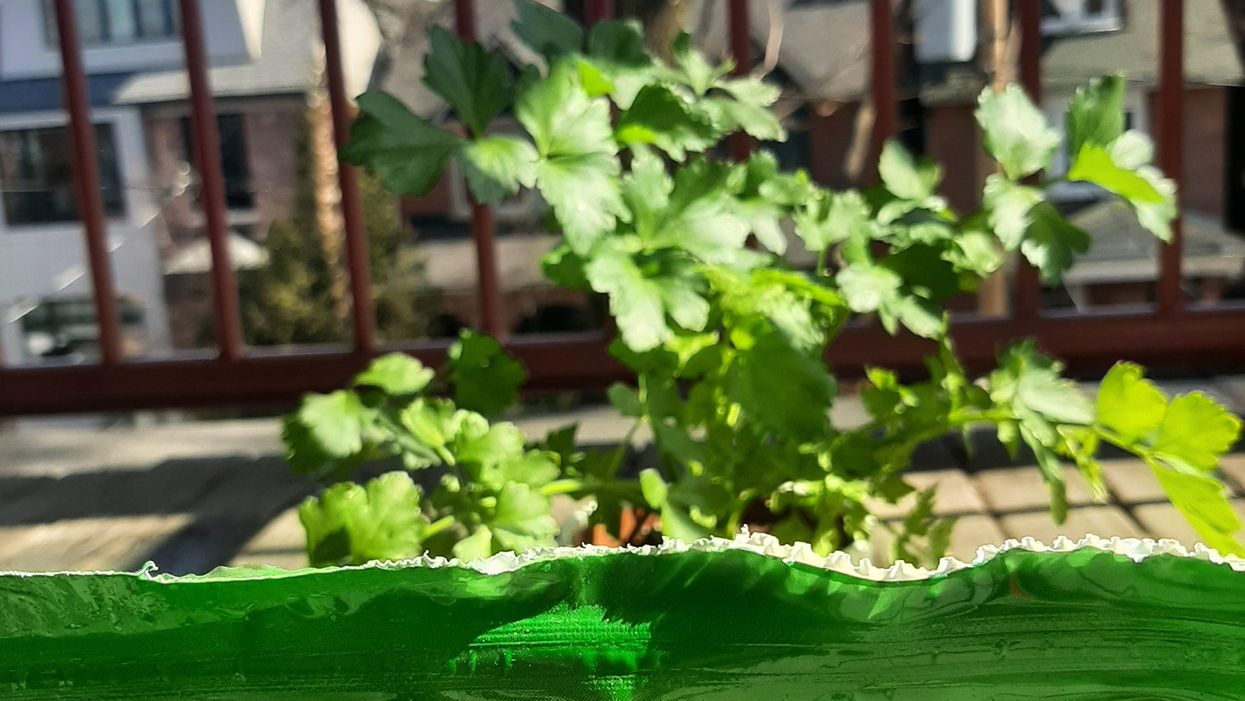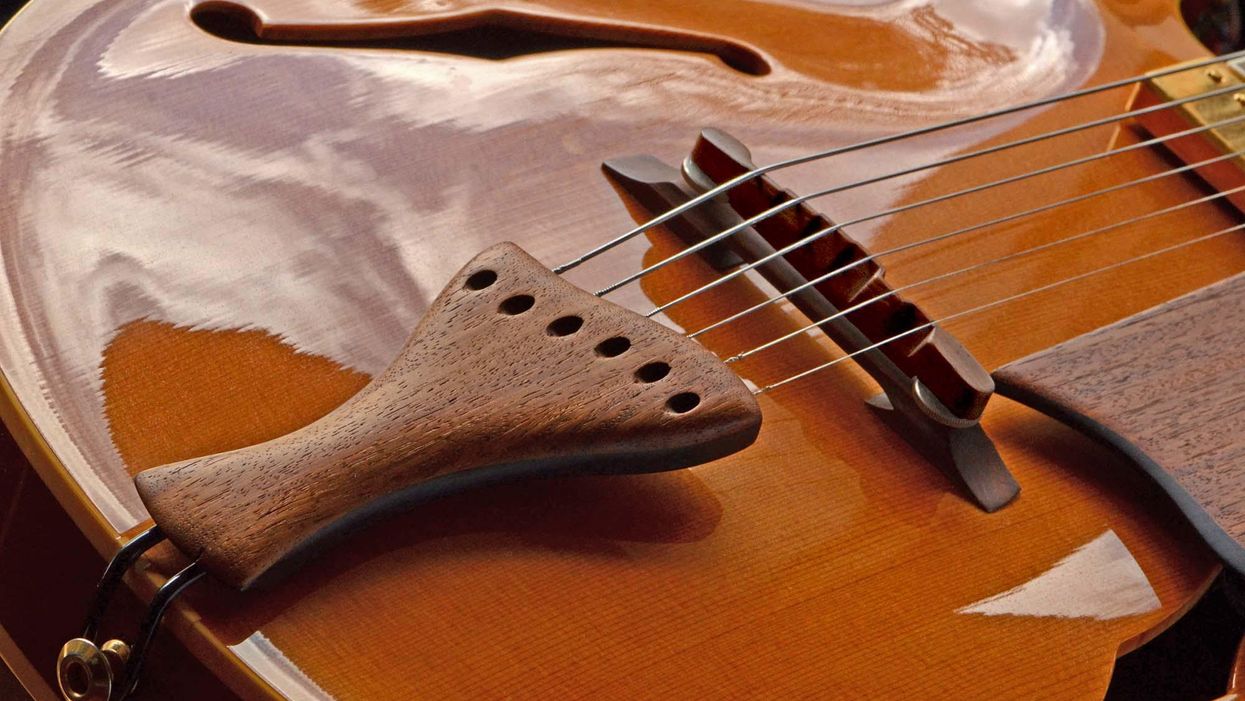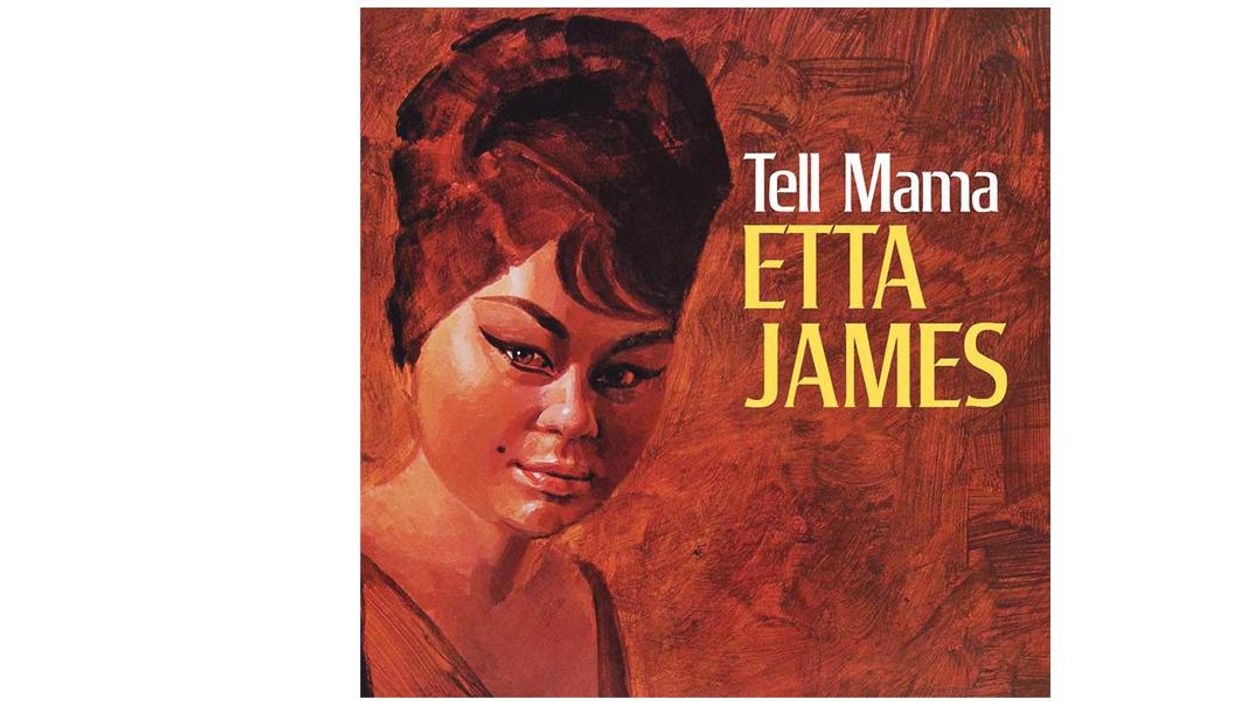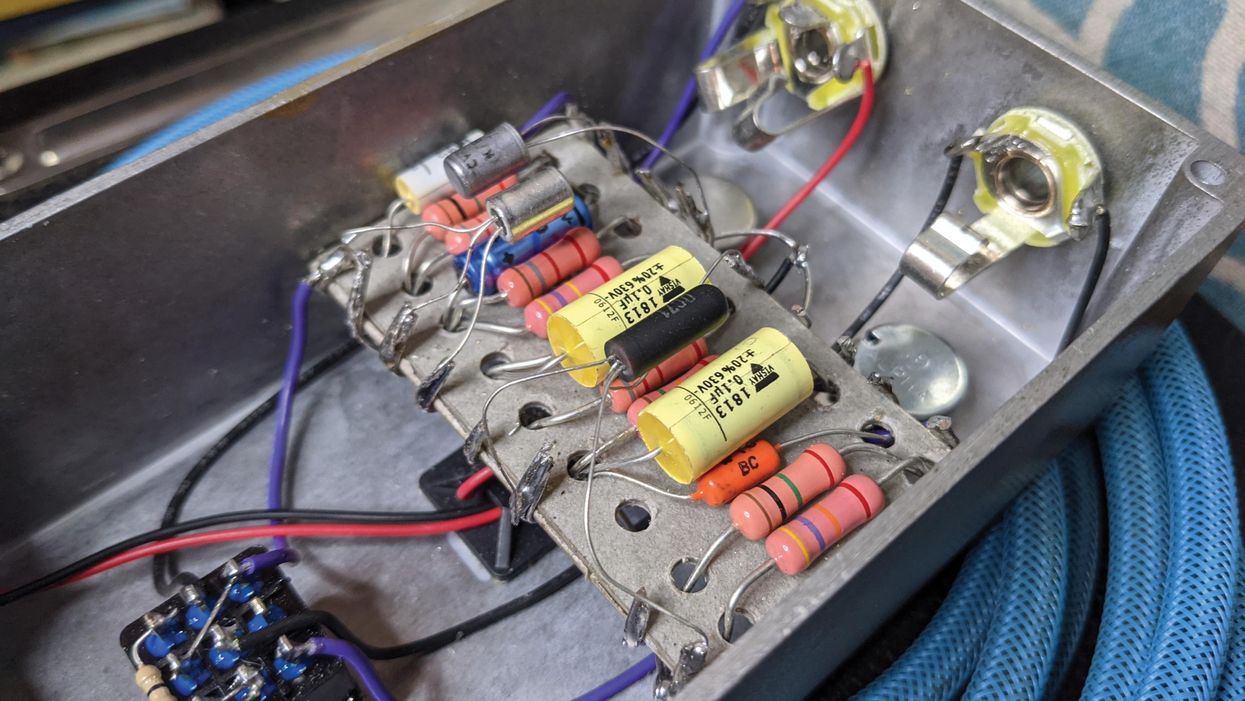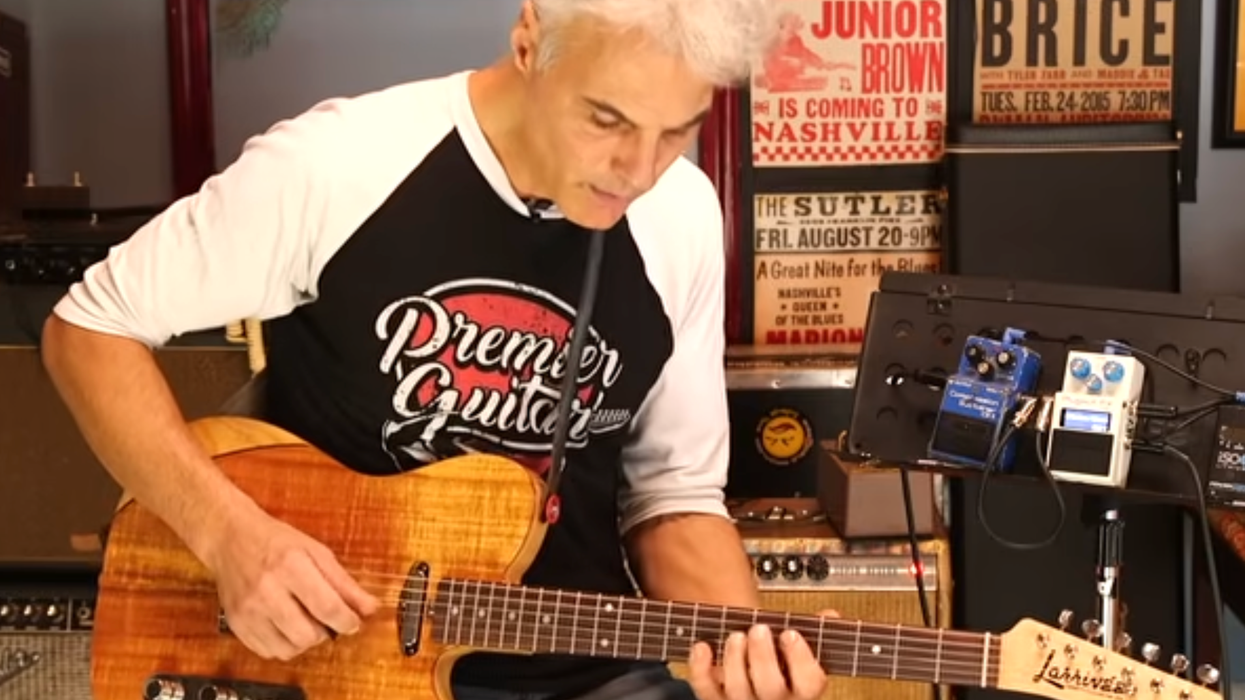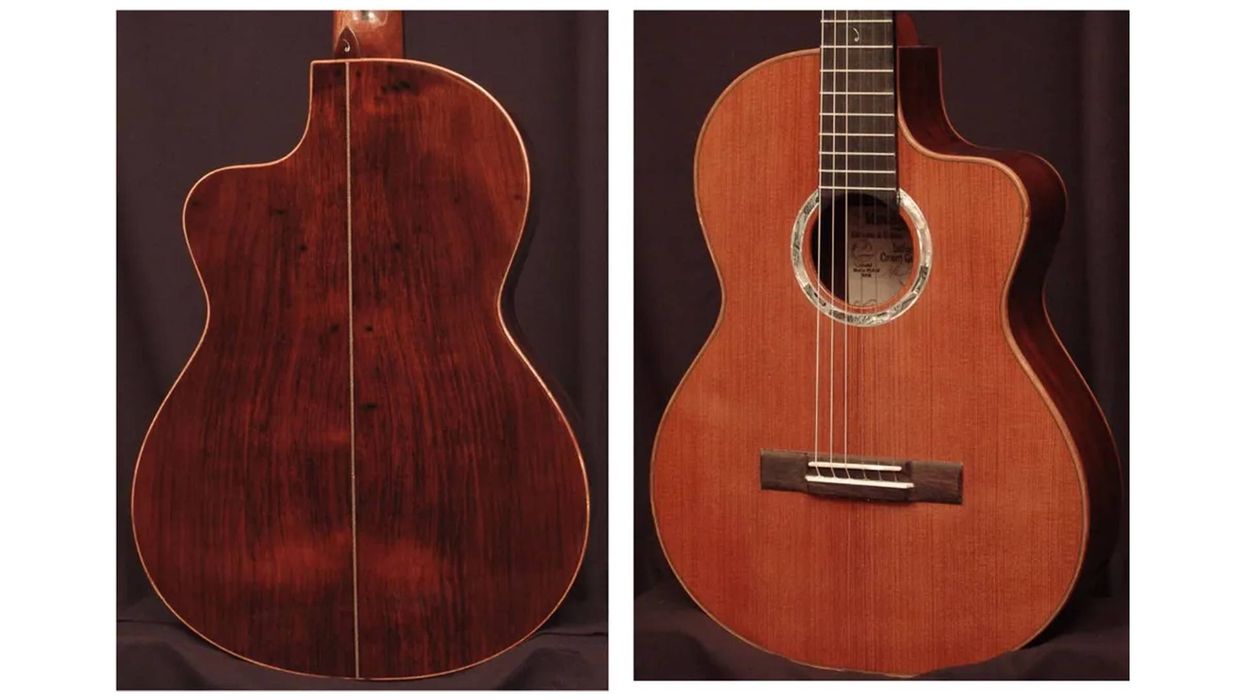For the past three weeks I’ve been on a radio tour with my wife, Megan Mullins, traveling with nothing but my Taylor and a sometimes-working tuner, playing the same four or five songs at three radio stations a day, five days a week. Given the workload, it would be easy to approach this gig like a factory worker: mind off, hands repetitively going through the motions all the livelong day. I battle the monotony by focusing on locking dead on with Megan’s fiddle and voice, working dynamics, and exploring what can be finessed out of a flat top. With a lot of effort, these simple acoustic parts have improved in subtle ways that most listeners probably won’t hear, but everyone who listens will feel. This got me thinking about the paradoxical nature of being an acoustic guitarist.
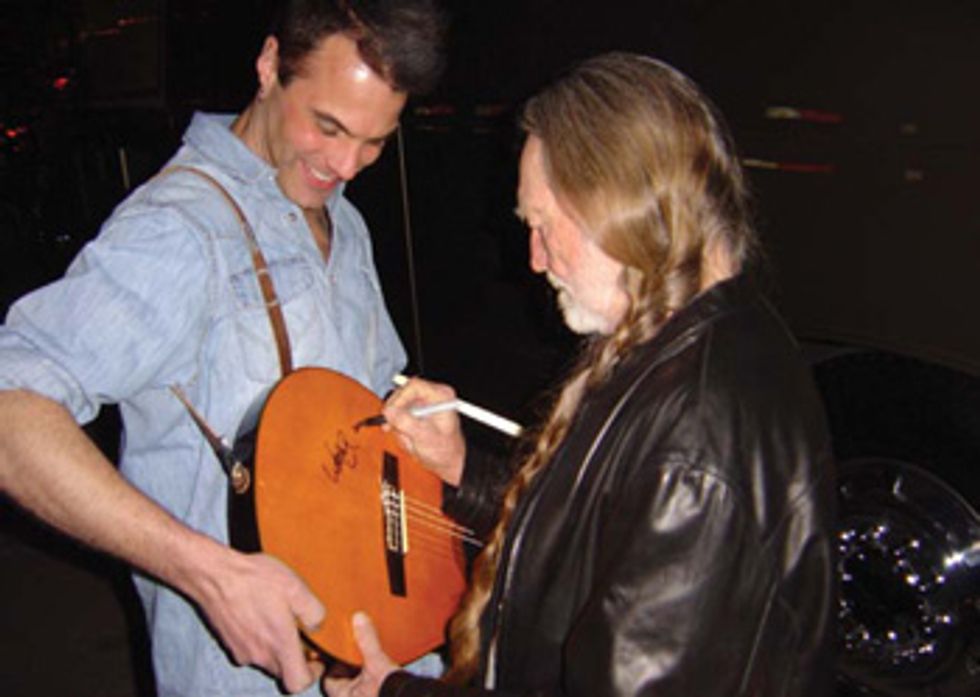 Wille Neslson signing John Bohlinger's Epiphone Chet Atkins guitar. |
Unlike electric guitar gigs, tone isn’t a source of stress when playing unplugged. I have three magic flat tops; if the engineer can’t get it with one of these, it can’t be done. I start with my 1946 Martin D18, which is what I imagine God plays when he jams with Bill Monroe in Heaven. If the engineer wants something more shimmery, I go to my Taylor GS8, which sparkles like Lil Jon’s diamond-encrusted smile. If they want a dark, rude, midrange sound, I bludgeon my Gibson J100, which, in the words of Terrible Ted Nugent, absolutely refuses to play sweet shit. If they want multiple passes or double parts, I’ll switch between different guitars, maybe playing in a capo’d position for a pass. Engineers often pan them hard left and right to fully exploit their personalities. These guitars are what we call “gig getters,” and I’m happy schlep them to my sessions.
I read that Tommy Tedesco was once on a session armed only with a single gut-string guitar (I’m paraphrasing, so forgive my inaccuracies). The producer got on the talk back and said, “Tommy, we’re not loving the tone of that guitar, try another one.” Tommy said, “Sure, no problem,” gently laid down his guitar, picked it back up and played it. “How’s that?” asked Tommy. The producer listened for a few seconds and responded, “That’s waaaaaaay better, thanks.”
My fourth acoustic session schlep is my beloved Taylor nylon string. Willie Nelson, one of my top 20 favorite guitarists, routinely demonstrates the power of a simple melody on a nylon string. Willie’s solos usually consist of him plunking out a rough version of the melody so far behind the beat that you can actually hear the THC in his system; it wouldn’t work on any other type of guitar. Because of Willie and “Trigger,” I pretty much have to take a nylon string to the studio. I used to bring a 12-string to acoustic sessions, but eventually quit because I spent half my time tuning and the other half playing out of tune. I loved the 12-string in “Stairway,” “More than a Feeling,” “Life’s Been Good,” “Dead or Alive,” and “Give a Little Bit,” but in my personal experience, their watery sound kills the pocket and never seems to sit right in the track like a good old six-string acoustic would.
Acoustic guitars remain my most reliable therapy. I have three of them on stands within reach as I type this, another in my bedroom and two more downstairs, out and ready at all times, and five more in cases. When stressed, I reach for them throughout the day the way a drunk reaches for his hidden bottles of vodka. Usually around 3 a.m. I find myself wide awake, my mind racing with concerns and regrets. I pick up a flat top and smack a big G, and feel my heart rate slow as the wood resonates against my sternum, while those long, cool strings push hard against my callused fingertips. It’s just wire and wood, but somehow so much bigger than the sum of its parts. I love the way a late-night E chord sings, breaking the silence of a lonely room, soothing the worried voices in my head. It makes me think that Robert Johnson might have met with the Devil, but he was ultimately looking for salvation—a little taste of serenity that he felt with his Gibson laid over his crossed legs, keeping the hell hounds at bay for the moment.
John Bohlinger
John Bohlinger is a Nashville guitar slinger best know for his six seasons leading the band on NBC’s “Nashville Star.” John also tours constantly, holding down the guitar/mandolin/pedal steel end for over 30 major artists. His songs and playing can be heard in several major motion pictures, major label releases and literally hundreds of television drops. For more info visit johnbohlinger.com.

